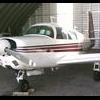Running a tank dry in flight
-
Members Online
- EricJ
- toto
- Rwsavory
- George Braly
- Mikey30V
- hammdo
- Ragsf15e
- PT20J
- Denis Mexted
- Mooney-Shiner
- kaba
- DXB
- redbaron1982
- Grant_Waite
- Justin Schmidt
- Schllc
- MikeOH
- TCC
- KSMooniac
- Nico1
- Sabremech
- 1967 427
- gmendoza
- 1980Mooney
- CCAS
- Bolter
- MattCW
- BeachLifeMoon
- Sixstring2k
- hubcap
- Grumpy
- dkkim73
- JohnB
- Art21
- jamesyql
- Brandt
- takair
- exM20K
- mluvara


Recommended Posts
Join the conversation
You can post now and register later. If you have an account, sign in now to post with your account.